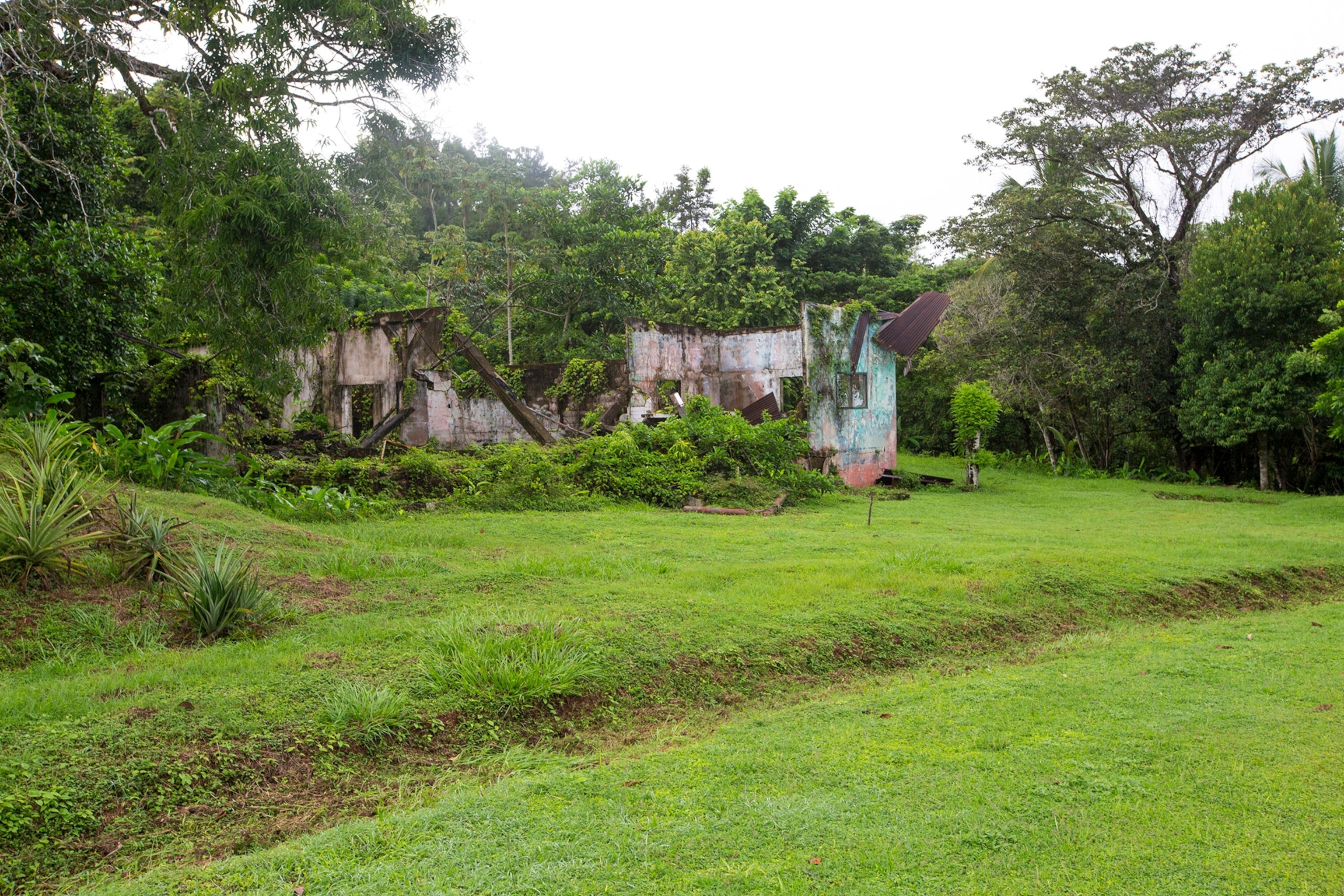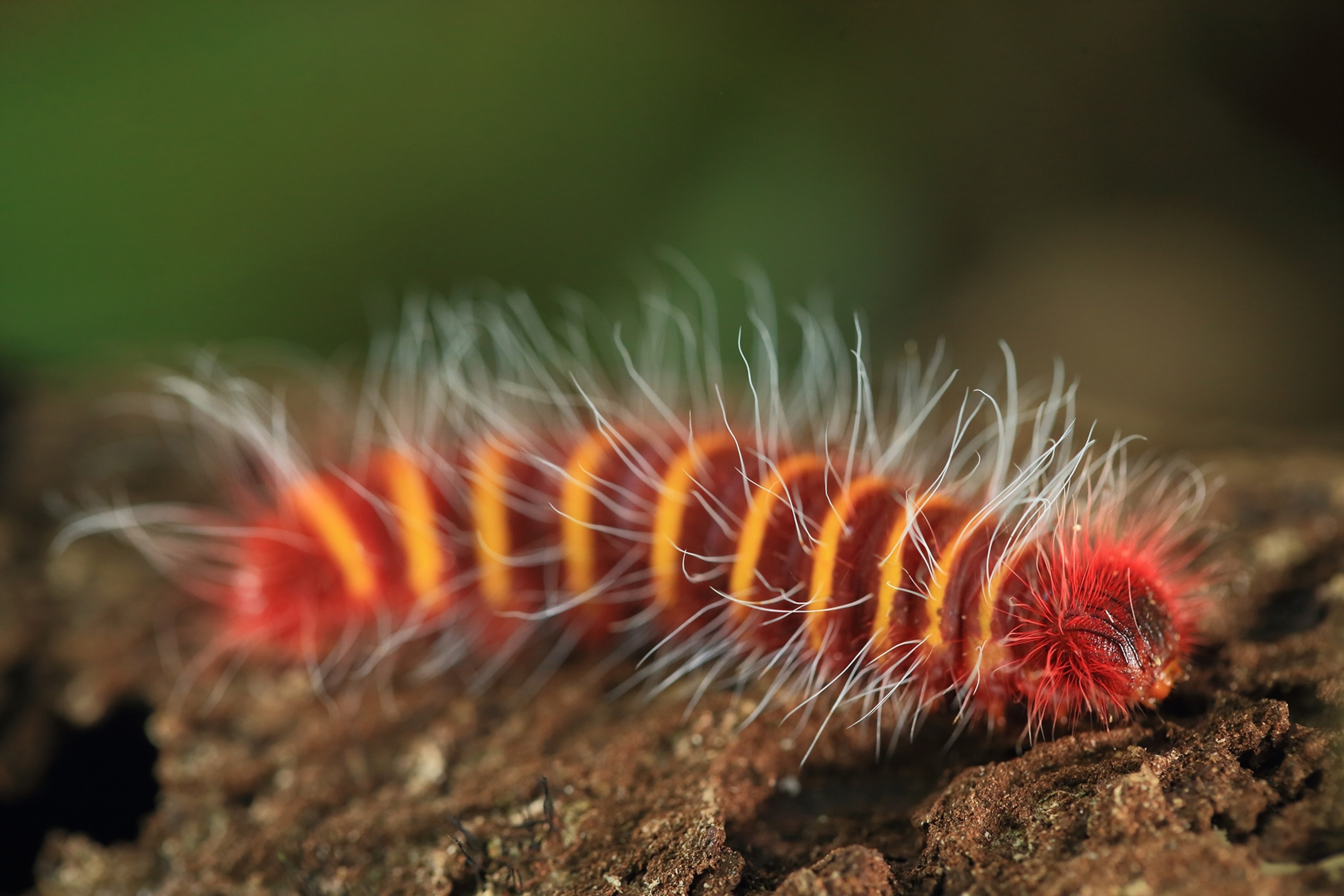









How a Deadly Prison Island Became a Natural Paradise
For almost 100 years, Coíba was inhabited only by criminals and political prisoners. Now it's one of the most biodiverse regions on the planet.
Beautiful but extremely dangerous—that’s how many Panamanians think of the island of Coíba 30 miles from their southern coast.
The largest island of the 38 islands contained in Coíba National Park, Coíba is a UNESCO World Heritage Site, and one of the most biodiverse regions on the planet. Containing just over 120,000 acres, it makes those who visit its shores feel as if they’re stepping back in time to an era when the Earth was undeveloped. In addition to the 1,450 plant species on the island, Coíba’s forests are filled with hundreds of unique animals, and pristine coral reefs lie just beyond Coíba’s beaches.
The island’s natural beauty, however, is an accidental case of conservation, attributable to the region’s dark past.
Life Below the Sea






Abundant Plant Life





Coíba's unique animals










Until 2004, the island was a penal colony, housing as many as 3,000 prisoners. Coiba’s deadly reputation led few to venture to the island's edges, inadvertently creating one of the most well-preserved rainforests in the Americas.
A Dangerous Prison
Established in 1919, the island was punishment for Panama’s most dangerous criminals—or for those who angered the wrong people. Unlike a penitentiary in which criminals are housed within fortress-like walls, on the island of Coíba, most prisoners were scattered throughout the island in 30 makeshift camps, creating shelters from natural surroundings.
It was the guards who stayed in small fortresses in the northern region of the island, protected from the island’s inhabitants. Prisoners who tried to escape were deterred by the sharks and crocodiles that inhabited the island’s waters.
For some prisoners, Coíba was a death sentence. It took grit to survive. If the island’s natural conditions didn’t kill you, your fellow prisoners might.

Those who were sent to Coíba during the rule of Panamanian dictators Omar Torrijos and Manuel Noriega were known as “Los Desaparecidos,” or “the disappeared.” Coíba National Park’s website notes that many prisoners were buried in unmarked graves or dismembered and thrown to the sharks.
Too deadly to attract the attention of tourists and developers, Coíba’s flora and fauna flourished. Some small-scale subsistence farming was conducted on the island and a number of livestock were brought as a food source; however, when the prison closed in 2004, 80 percent of the forest remained largely untouched.
Now, a team of researchers are working to catalogue the largely undocumented life on the island.
Unexplored Territory
“Isolated,” is how National Geographic photographer Christian Ziegler describes what it feels like to be on the island. Isolated, and quiet.
“It’s like a time capsule for the past 100 years,” he explained.
He never saw the island when prisoners inhabited it, but he knows those who live on the mainland still perceive Coíba to be a deadly place for the damned. Through beautiful photography and scientific research, he hopes to change that perception and inspire locals to fight for the island’s continued conservation.
Ziegler first visited the island 10 years ago and was awestruck by the island's thriving biodiversity.
In 2015, he began a BioBlitz project, raising money to bring 30 international researchers from various fields to document the amazing wildlife on the island. Ziegler continues to raise money through a crowdsourcing platform called experiment.
Over 100,000 images from 45 different camera traps on the island helped catalogue the island’s rich species. Officials from the Panamanian government have been instrumental in aiding research efforts.
Omar R. López, a director at Panama’s Ministry of Science and Technology, began studying Coíba in 2008. One of his primary goals was to investigate how Coíba evolved separately from Panama’s mainland. Researchers were initially baffled by the absence of carnivorous species on Coíba, which can be found in abundance in Panama.
“Coíba poses interesting questions about the evolutionary process,” said López.
The island is a part of the underwater Coco Mountain Ridge and formed as part of the Galapagos Islands before the tectonic plates on which Coíba's sits shifted north.
Many of the preliminary findings collected in the past two years are still awaiting review, but what the team has found thus far proves how well an ecosystem can flourish when left undisturbed. Coíba’s geographic location also means that a number of the species on the island are endemic—existing only on Coíba.

For example, Coíba has an impressive population of bats. As many as 30 bat species have been documented there, with yet-to-be-published research suggesting several new species.
Ten sub-species of birds are believed to exist only on Coíba, out of at least 172 species of birds found there.
Seventy different species of ants, with seven sub-species native to Coíba have also been documented, along with an impressive number of orchid bees.
The coral reefs surrounding the island are the second biggest along the American Pacific coast. Twenty different species of marine mammals, including humpback whales and orcas, have been documented in the region. Sharks, a once fence-like presence for the island’s human inhabitants, are abundant in population numbers and species differentiation—33 have been documented, including hammerheads, whale sharks, and guitar sharks.
Along with the endemic species contained on the island, there are a number of threatened species living on the island. The crested eagle, which has mostly disappeared from Panama’s mainland, has a stable population on Coíba.
Protecting Coíba
“[Coíba] is the biggest uninhabited island on the whole Pacific coast,” said Ziegler. “The world is so full of people; we have to fight for this place.”
As the island becomes more popular and easier to access, the understaffed Panamanian military units supervising the island have found it difficult to effectively patrol, and the island’s unique species have become susceptible to poaching. Illegal fishing has also become a problem along Coiba’s delicate reefs.
Companies are also interested in developing the island for tourism. However, a plan put forth by Panama’s government in 2009 limits the amount of tourism the island is exposed to and allots funds for continuing to conserve Coiba. A research station is currently being built on the island that would house four to five scientists and several laboratories.
While government officials have been receptive to implementing protections for the region, Ziegler and López worry that this support could wane with the next administration.
“It would be for the best of Panama and the best of humanity to protect this environment,” said López.
Rather than remembering Coíba as a prison, he hopes the world will come to see it as a paradise.
Along with an international team of experts, biologist and National Geographic photographer Christian Ziegler helped catalogue the diversity of wildlife in the island’s ecosystems in a survey called a Bioblitz. Ziegler with fellow photographer Tim Laman (underwater), and Ken Pelletier and Peter Houlihan (video) documented the effort.
This project was supported by iLCP (International League of Conservation Photographers), STRI (Smithsonian Tropical Research Institute), Ministerio de Ambiente, Panama and a number of donors. If you want to learn more about the Coiba project, get recent updates or support this mission please go tohttps://experiment.com/projects/ptculkxjhhcbbhuwnxkm and follow Christian Ziegler on Instagram @christianziegler
Related Topics
You May Also Like
Go Further
Animals
- This ‘saber-toothed’ salmon wasn’t quite what we thoughtThis ‘saber-toothed’ salmon wasn’t quite what we thought
- Why this rhino-zebra friendship makes perfect senseWhy this rhino-zebra friendship makes perfect sense
- When did bioluminescence evolve? It’s older than we thought.When did bioluminescence evolve? It’s older than we thought.
- Soy, skim … spider. Are any of these technically milk?Soy, skim … spider. Are any of these technically milk?
- This pristine piece of the Amazon shows nature’s resilienceThis pristine piece of the Amazon shows nature’s resilience
Environment
- This pristine piece of the Amazon shows nature’s resilienceThis pristine piece of the Amazon shows nature’s resilience
- Listen to 30 years of climate change transformed into haunting musicListen to 30 years of climate change transformed into haunting music
- This ancient society tried to stop El Niño—with child sacrificeThis ancient society tried to stop El Niño—with child sacrifice
- U.S. plans to clean its drinking water. What does that mean?U.S. plans to clean its drinking water. What does that mean?
History & Culture
- Meet the original members of the tortured poets departmentMeet the original members of the tortured poets department
- Séances at the White House? Why these first ladies turned to the occultSéances at the White House? Why these first ladies turned to the occult
- Gambling is everywhere now. When is that a problem?Gambling is everywhere now. When is that a problem?
- Beauty is pain—at least it was in 17th-century SpainBeauty is pain—at least it was in 17th-century Spain
- The real spies who inspired ‘The Ministry of Ungentlemanly Warfare’The real spies who inspired ‘The Ministry of Ungentlemanly Warfare’
Science
- Here's how astronomers found one of the rarest phenomenons in spaceHere's how astronomers found one of the rarest phenomenons in space
- Not an extrovert or introvert? There’s a word for that.Not an extrovert or introvert? There’s a word for that.
- NASA has a plan to clean up space junk—but is going green enough?NASA has a plan to clean up space junk—but is going green enough?
- Soy, skim … spider. Are any of these technically milk?Soy, skim … spider. Are any of these technically milk?
Travel
- Could Mexico's Chepe Express be the ultimate slow rail adventure?Could Mexico's Chepe Express be the ultimate slow rail adventure?
- What it's like to hike the Camino del Mayab in MexicoWhat it's like to hike the Camino del Mayab in Mexico







